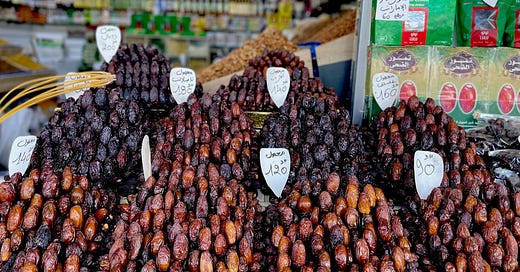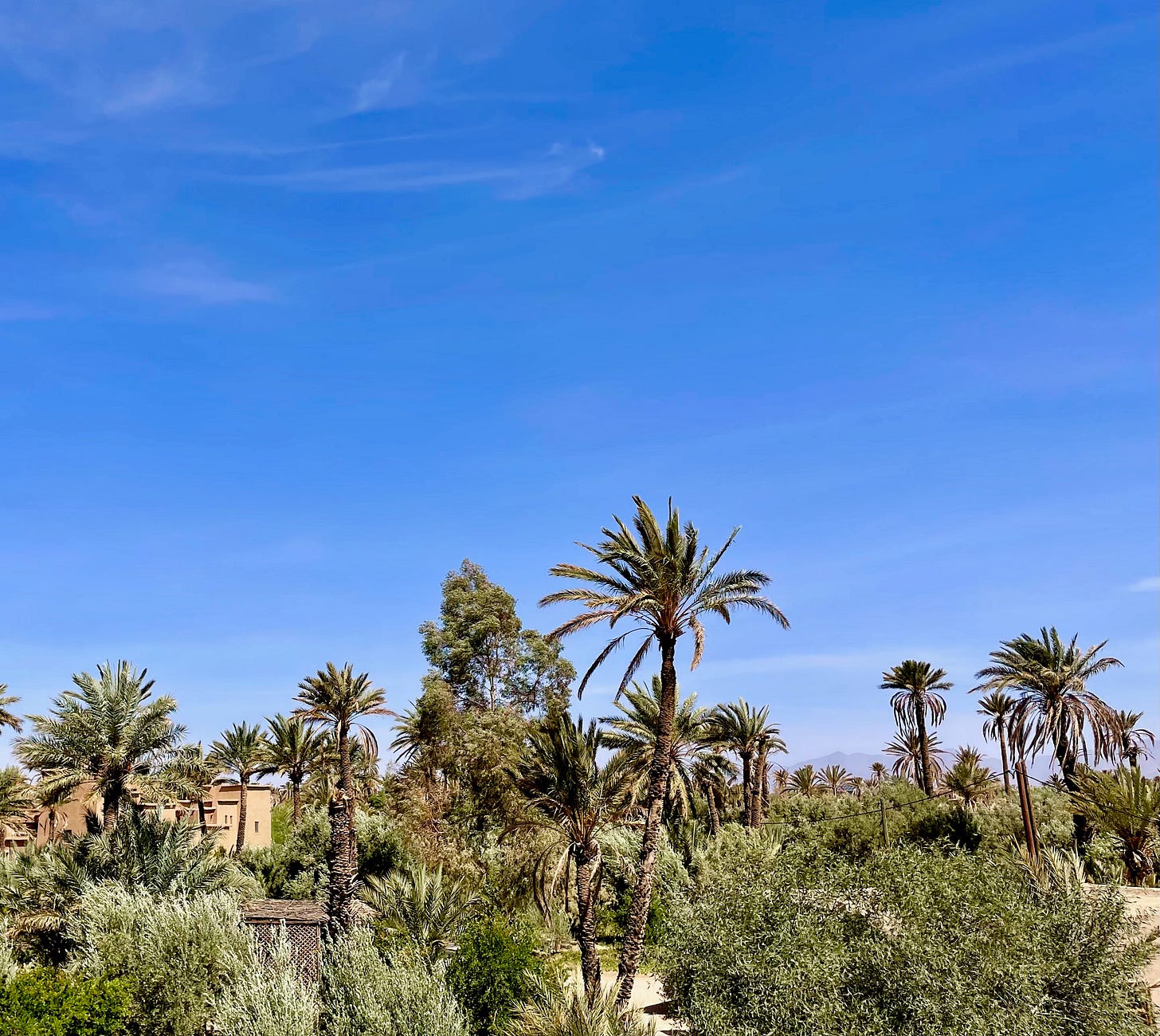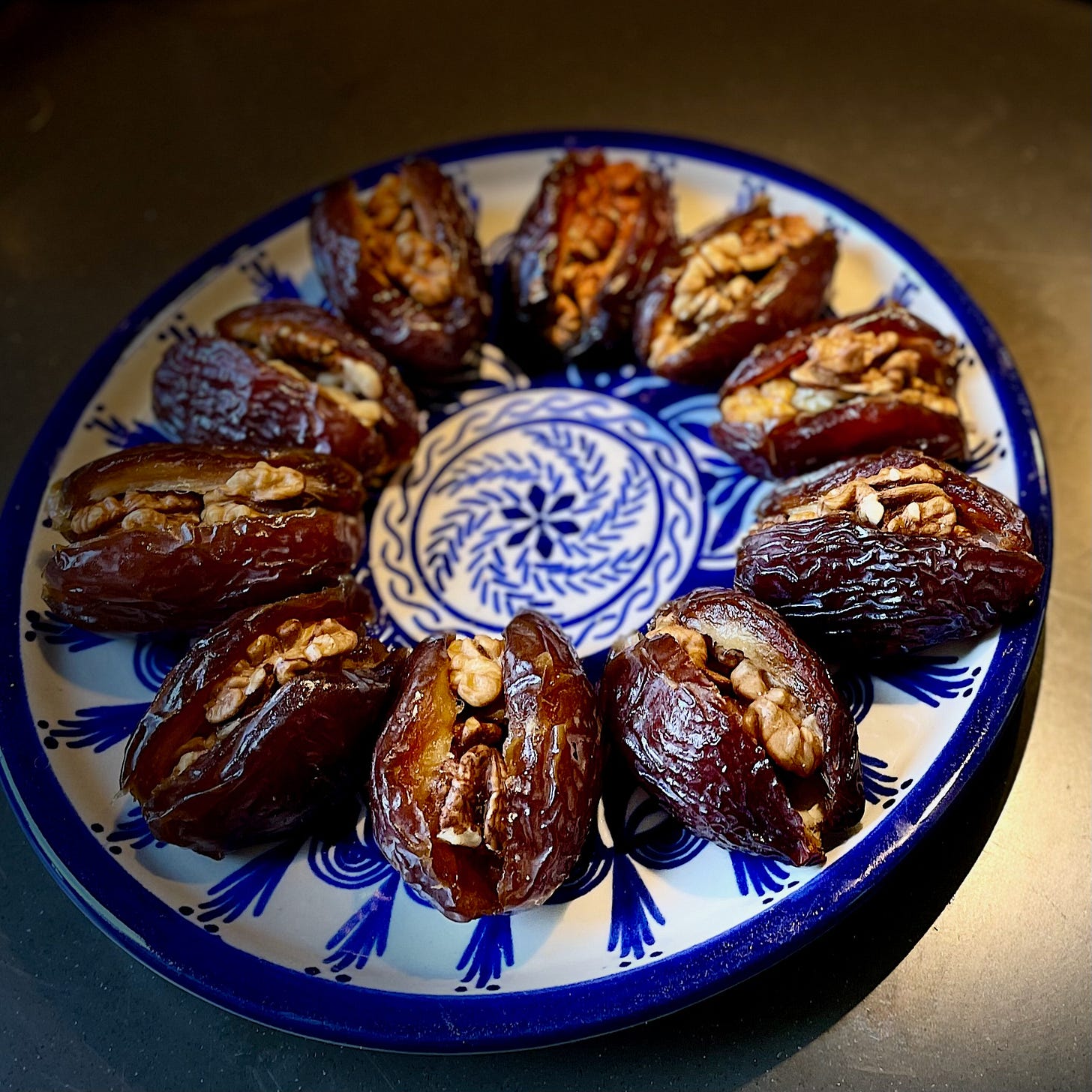Every Ramadan, dates take center stage on tables across the world. For centuries, dates, in all their varieties, have been an essential part of breaking the fast. Their natural sweetness and historical symbolism have made them an integral part of the Muslim holy month. Dates magically connect people to their faith and cultural heritage.
But not many people know the story of how Mejhoul dates, a variety native to Morocco, were saved from extinction.
Unlike other types of dates, Mejhoul stand out not just for their luscious flavor but for their extraordinary history of survival and resilience.
Nearly wiped out by Bayoud disease in the 1920s, these exceptional dates were saved thanks to the vision of Dr. Walter Swingle, a pioneering botanist with the USDA who recognized the importance of preserving this extraordinary variety.
Alongside him was Frank Thackery, a longtime Indian Agent and advisor to the USDA, whose intuition was key—he sought out Johnson and his wife, an elderly Native American couple from the Chemehuevi tribe, to care for the offshoots. Their permanent presence in the Nevada desert made them the perfect guardians for the fragile plants.
Despite facing immense challenges in the harsh desert environment, Johnson and his wife nurtured the 11 offshoots with extraordinary care for seven years. Their dedication ensured the survival of nine plants, which became the ancestors of all Mejhoul dates grown worldwide today.
I first learned about the Chemehuevi tribe while listening to the Gastropod podcast episode Your Mystery Date. The podcast made me even more curious about the untold story of Johnson and his wife. Who were they? Did they realize the significance of their work in saving Mejhoul dates from extinction? Alongside Dr. Swingle’s and Frank Thackery’s efforts, their story deserves recognition as an essential chapter in the survival of this incredible fruit.
This journey of Mejhoul dates is a reminder of how food connects us to history and culture. It inspired me to explore more about the roots of the foods we love, which I dive into in my upcoming cookbook, The Walking Palm Tree: A Culinary Journey of a Nomad.
For those interested in diving deeper into the history of Mejhoul dates, I highly recommend reading The Amazing Story of the Fabulous Medjool Date by Marc E. Paulsen. It’s a fascinating account of their journey and survival. The book also contains recipes! The proper name of the dates, Mejhoul, was not commonly used when Paulsen’s book was published over ten years ago.
You’d be surprised at how long the list of disastrously misspelled versions of Mejhoul is! From "Medjool" to "Mejool" and countless other variations, the proper name of this extraordinary date has often been lost in translation.
Repeat after me: the correct name is Mejhoul - Arabic for "unknown" or "mysterious". It reflects its cultural and linguistic roots in Morocco - a small detail, but one that carries so much history and identity.
Here’s a simple recipe to honor these legendary dates:
Walnut-Stuffed Mejhoul Dates
Yield: 4–6 servings
Ingredients:
10 Mejhoul dates
10 large walnut halves
Method:
Slice each date lengthwise and remove the pit.
Fill each date with a walnut half, rounded side out.
Serve as a snack with tea or on a cheese platter.
Thank you, Dr. Swingle, for your vision and for recognizing the importance of preserving a piece of history through these dates. Thank you, Agent Thackery, for your intuition, dedication, and for finding the perfect caretakers in Mr. and Mrs. Johnson. And thank you, Mr. and Mrs. Johnson, for your care, resilience, and unwavering commitment in the face of immense challenges over seven years.
Do you have a favorite variety of dates? Share your thoughts below!






